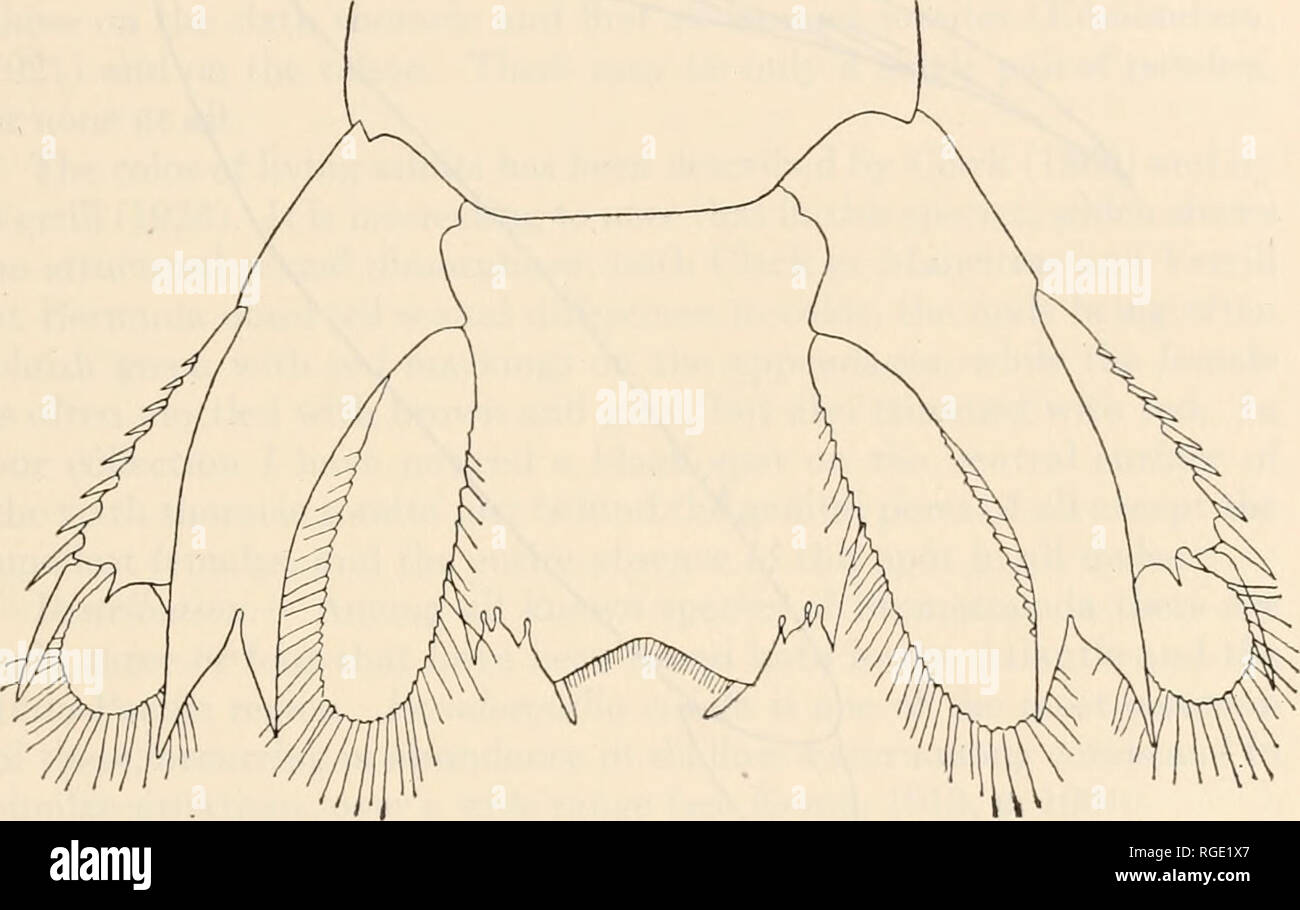. Bulletin of the Museum of Comparative Zoology at Harvard College. Zoology. BIGELOW: STOMATOPODA OF THE PACIFIC 15; terior margin of the telson between the mobile submedian teeth (Fig. 5). These denticles, secondary spinules of Jurich, are of nearly uniform size. There is no indication of the tertiary spinules that Jurich finds to be characteristic of the pseuderichthus stage of this species. The dactylus of the raptorial limbs is without lateral teeth, but beneath the integument the rudiments of the two lateral teeth are more or less clearly visible. The propodus bears the usual three movabl

Image details
Contributor:
Book Worm / Alamy Stock PhotoImage ID:
RGE1X7File size:
7.2 MB (177.1 KB Compressed download)Releases:
Model - no | Property - noDo I need a release?Dimensions:
1990 x 1256 px | 33.7 x 21.3 cm | 13.3 x 8.4 inches | 150dpiMore information:
This image is a public domain image, which means either that copyright has expired in the image or the copyright holder has waived their copyright. Alamy charges you a fee for access to the high resolution copy of the image.
This image could have imperfections as it’s either historical or reportage.
. Bulletin of the Museum of Comparative Zoology at Harvard College. Zoology. BIGELOW: STOMATOPODA OF THE PACIFIC 15; terior margin of the telson between the mobile submedian teeth (Fig. 5). These denticles, secondary spinules of Jurich, are of nearly uniform size. There is no indication of the tertiary spinules that Jurich finds to be characteristic of the pseuderichthus stage of this species. The dactylus of the raptorial limbs is without lateral teeth, but beneath the integument the rudiments of the two lateral teeth are more or less clearly visible. The propodus bears the usual three movable spines, and has a strong spine near the distal articulation (Fig. 6). In place of the usual pectinations on the upper edge, there is a. Fig. 5.— Telson and uropods of P. ciliala in the postlarval stage, ventral aspect. series of fine hairs. The eyes are large and, unlike the adult form, are somewhat compressed laterally. They differ in shape from the eyes, at this stage, of both P. ornata and P. oculafa in being elliptical in lateral view. The keel on the dorsal process of the basal segment of the an- tennae is concave in lateral view, as in the adult. pi; The rostrum is of the adult form, wider than long, the apex obtuse and depressed. The carapace is of the adult form but not so broad, its width being less than half its length. The postero-lateral angles of both the fourth and the fifth abdominal somites are strongly spinous. The sixth abdominal somite has the usual submedian and lateral marginal spines, but no trace of the intermediate pair. The telson is wider than long, smooth above, except for a low narrow median crest that ends. Please note that these images are extracted from scanned page images that may have been digitally enhanced for readability - coloration and appearance of these illustrations may not perfectly resemble the original work.. Harvard University. Museum of Comparative Zoology. Cambridge, Mass. : The Museum